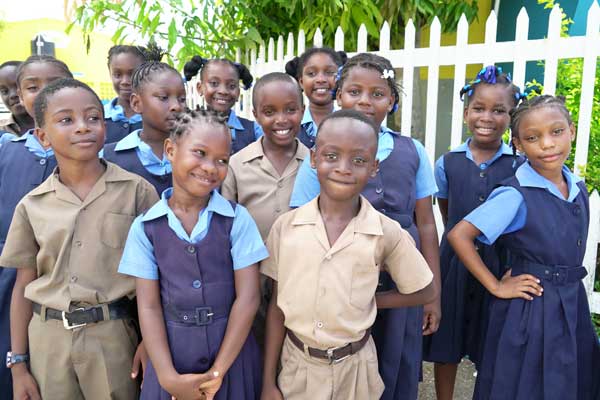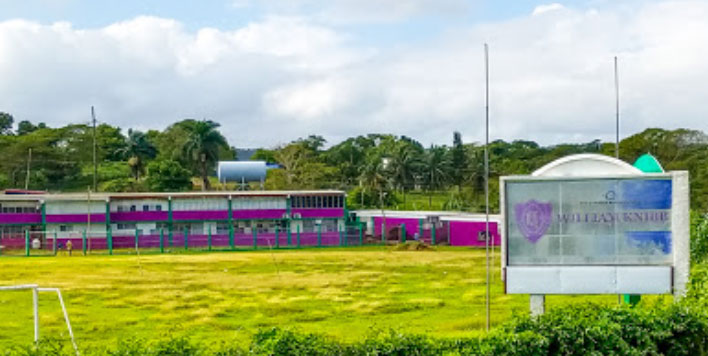JAMAICA | Patrick Beckford sets the Record Straight on Golding's "Education Failure"

NEW JERSEY, United States, August 2022 - Today I read an article in Daily Gleaner, regarding former JLP prime minister Bruce Golding's statement, that "Education is the biggest failure of the Independence era."
What strikes me is the lack of responsibility the former prime minister has for his and his party's role in the "failure. " Patronizing highlighting statements of his former leader, the Hon. Edward Phillip George Seaga.
As a child of the sixties with older siblings, I am very much familiar with our educational development, especially for the masses. Most high schools were created by established religious denominations before Independence, simply for the privileged and plantation owners and their imported European children.
Our educational system has not entirely been shaken from its British model in many respects. Based on how each child is laced in Secondary schools, where the privileged can do early childhood education at schools with high-end equipment and well-qualified specialists/teachers.
To enter High schools before 1957, emphasis was made on the "haves," as the poorer class would have to be extraordinarily gifted to be allowed to receive high school entrance examinations.

While the structure and outcome of the exam were still somewhat classist, the CEE represented a vast improvement over what existed before. It was the strategy used by the Government to allocate high-school places to primary and prep school children. Primary Education in Jamaica: From Common Entrance to GSAT to PEP —diG Jamaica.
The Common Entrance Examination, introduced in 1957, made 1,500 free places available to children in primary schools. This was the first serious attempt to give access to secondary education to children of the lower socio-economic stratum. This policy change in education has to be seen against the background of political change.
It was also in 1957 that the final Federation Conference, which decided on an independent federal West Indian state, took place in Jamaica. Greater access to quality education at all levels was a priority.
This new method of selecting children age 11+ was aimed at providing a better opportunity for children of primary schools to enter the few high and technical schools there were. The number of places in schools was increased to allow for an increased enrolment of 160 percent over the next 10-year period.
This would bring the number of pupils in high and technical schools to 26,000. Even so, this would only provide for 10 percent of the school-age population of the 11+ cohort. The Next 50 Years - Build The Education System We Need | News | Jamaica Gleaner (jamaica-gleaner.com)
Mr. Golding should have explained the lingering effects of that era well into post-independence, and the ten years the Government wasted that did not care about education and realizing its importance for nation-building.

After consultation with UNESCO, a "New deal" for education was prepared in 1966. The following actions were efforted by then GOJ:
- The Canadian International Development Agency loan was made available to build 40 primary schools.
A loan from the World Bank expanded education in grades seven to nine to broaden the secondary system. 50 schools
- schools to accommodate 37,530 students.
History recognizes the then colonialist and thoughtless approach to this. One crucial factor is age and lack of adequate skill set to meet the exploding population's needs among the many. No wonder Golding ignored the fallacy of his party's initial approach.
The electorate swept in a new government in 1972 led by Michael Manley. Here are some key developments. German educator Fredric Froebel in developing the early childhood education system, asserted, "The child is the father of the man," and this makes me firmly think that the lack of concern for education in the early years of Independence lays the blame squarely on his party's feet.

In 1973, the Ministry of Education invited a joint USAID-World Bank-CIDA Education Sector Assessment Team to work with the Educational Planning Unit. The ministry would be assisted in preparing a systematic analysis of the current educational and training system problem and recommend project alternatives for consideration by the minister and other key policymakers.
The result was the Jamaican Education Sector Survey, completed in late 1973. This report led to the Government of Jamaica-USAID Rural Education Program, which began in 1976. Under this project, five projects were developed:
i) Primary - To establish six experimental primary schools to test and modify curricula relevant to rural experience.
ii) Secondary - To establish three agricultural vocational schools to provide initial preparation of students for careers in agriculture.
iii) Teacher training- To establish a teacher-training institution that would emphasize rural development in its training programs;
iv) Continuing education - To develop a program that would provide the opportunity for training and education as a strategy for individual and community development;
v) Management - To provide the ministry with the capability for effectively managing the education system.

The program not only included Improvement in infrastructure, but the great emphasis was also placed on delivery. The Curriculum Development Thrust began in 1972 and was not only a major
the effort to reform the content of the curriculum in all subject areas but was also a measure to introduce methodologies for teaching an integrated curriculum. This was introduced instantly nationwide to all grade levels.
By 1975, the ministry was reorganized and the The functional Education Section of the Core Curriculum Unit was created to carry out the work of the Curriculum Development Thrust. All of this was encapsulated in the Curriculum Thrust of the '70s.
In the two academic years 1974-75 and 1975-76, approximately 38,000 places were added to junior secondary schools, with emphasis on vocational programs in the curriculum offerings and options for these grades 10 and 11 students.
Despite these developments, many schools still had inadequate facilities. All the necessary buildings and equipment were not provided then - or since.
To address this, many schools were placed on a shift system, a move aimed at maximizing the use of existing buildings.
This move was short-term; however, after more than a generation, the system still provides a means of compensating for inadequate infrastructure. The Next 50 Years - Build The Education System We Need | News | Jamaica Gleaner (jamaica-gleaner.com).
All these facts were taken from documented writings published in the Gleaner former PM Golding, and you must not have any interest in researching to present balanced rhetoric. Still, I suspect to cover your government/party's dismal failure in education.
Imagine Falmouth, Trelawny, where I am from, did not have a high school for boys until after 1974, not even one of the "Secondary schools" in the largest populated area in the parish.
The same Seaga you quoted closed the Agricultural school facilities and replaced them with a police training school. The same GC Foster Training school was almost shut down by his administration, where the Olympic-sized pool was also left to waste.
Sir, you can make these utterances to those who are lazy to do the research and smile, thinking your disingenuousness will fly!
I agree with you on the current state and the trajectory to satisfy our now "service mentality" economy, all mega hotels, where workers are treated like indentured servants/quasi slaves as the Government turned a blind eye.
The glass is indeed half empty, but let's celebrate the half full as we collectively use our history (both good and bad) as our guide toward future development.
-30-

 Ar
Ar  En
En